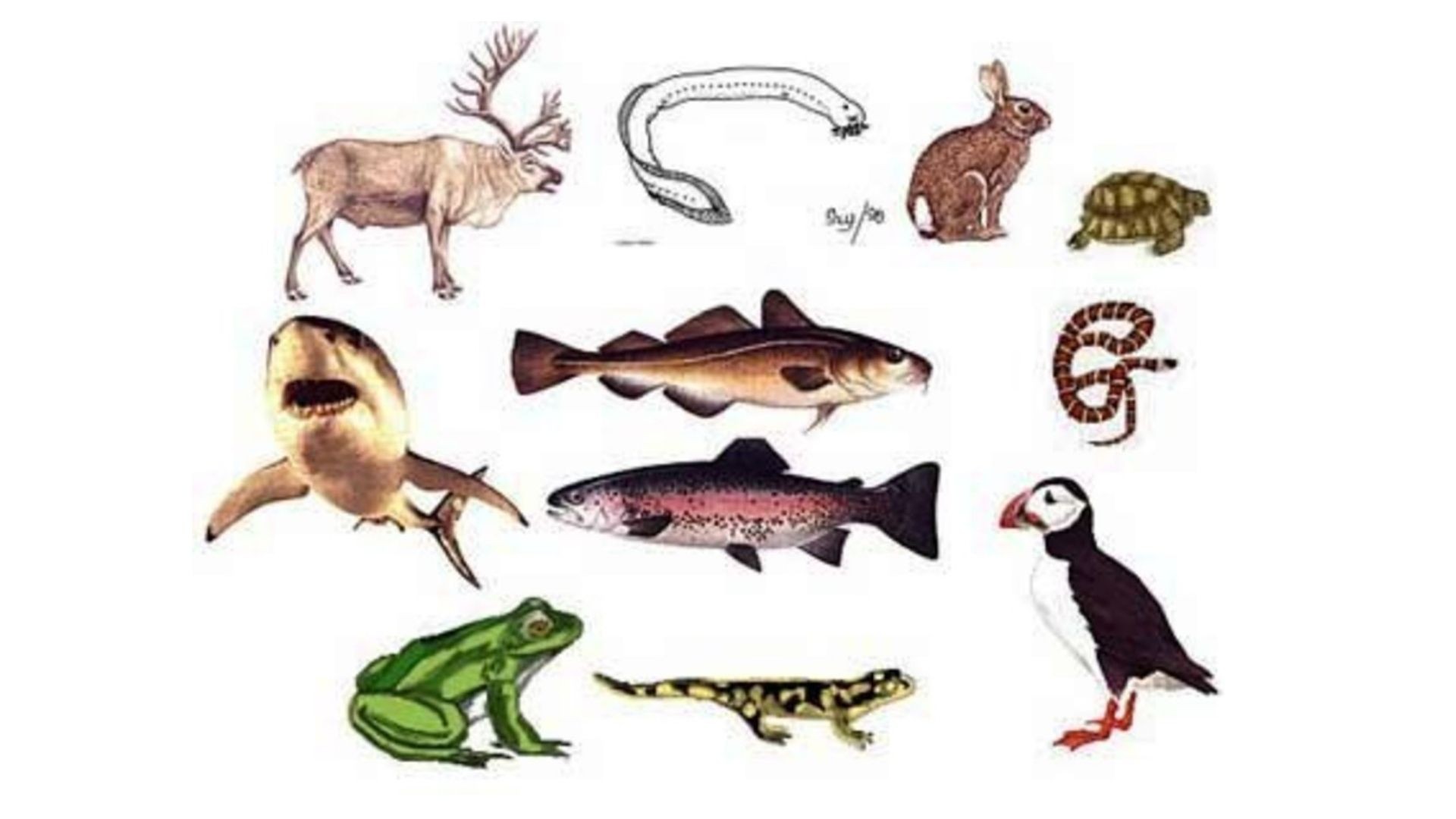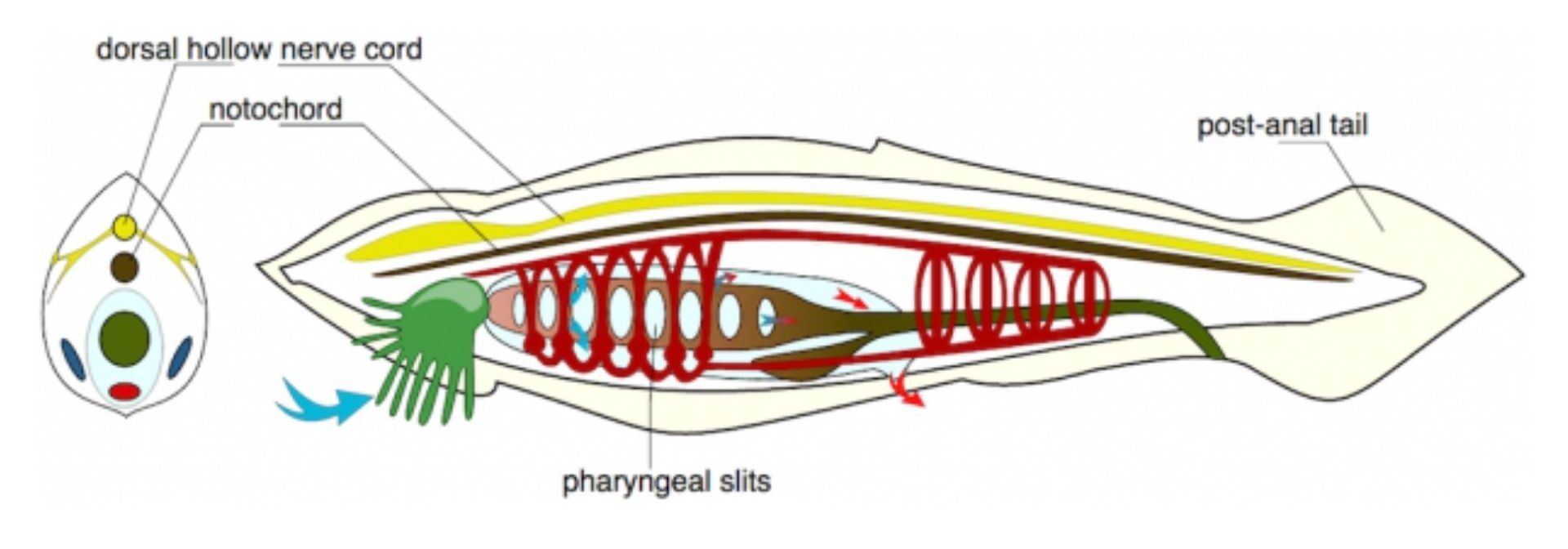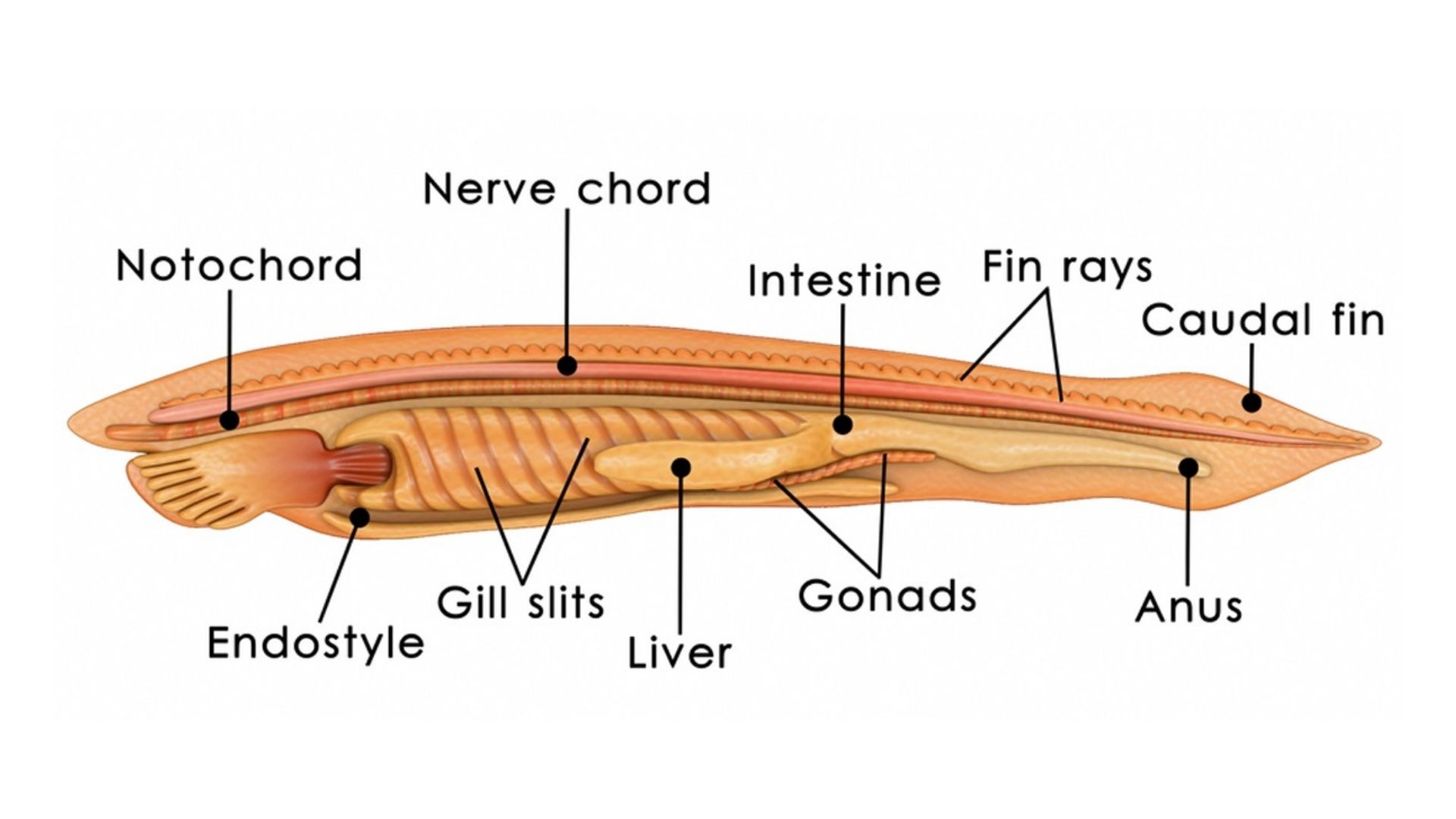Biology Forum › Zoology Discussion › What is phylum Chordata?
- AuthorPosts
- August 1, 2021 at 11:34 pm #118406
 Josie-Ann Le BlancParticipant
Josie-Ann Le BlancParticipantPhylum Chordata definition
What is phylum Chordata? The phylum chordate definition in biology is a subdivision of the Animal Kingdom. What are chordates? Chordates are the animals that belong to the phylum Chordata class. Phylum Chordata animals include both vertebrates and invertebrates and are classified into subdivisions. Vertebrates are animals who have a backbone inside their body while invertebrates do not. Some vertebrate chordate examples are snakes, ravens, wolves, horses, dolphins and deer. Invertebrate chordate examples are tunicates and lancelets.
Can you name some other possible Chordata vertebrates and invertebrates?

Figure 1. Different kinds of animals that belong to the classification Chordata.
SourceCharacteristics Of Phylum Chordata
All members of the Chordata class have all the following characteristics: Notochord, dorsal nerve cord, pharyngeal slits and post anal tails.

Figure 2. General diagram of Chordata characteristics.
SourceNotochord
This rod-like body part is found between the digestive tract and nerve cord of the animal. It is crucial for the support of the nerve cord when the organism is an embryo and then the vertebral column will take its place as the vertebrate develops.
Dorsal Nerve Cord
This chord lies dorsal (to the back of) the notochord and is hollow. This dorsal hollow nerve cord is a nerve grouping that feeds both the spinal cord and the brain.
Pharyngeal Slits
Chordate animals possess these openings at some stage in their life, near the lateral sides of the pharynx. The pharyngeal slits connect the mouth and the throat and allow water to pass through the mouth without having to enter the digestive tract.
Post anal Tail
Chordates have tails that are made up of skeletal muscles. They are augmentations of the body to the anus. These help fish-like species with their locomotion but are usually not present in adult Chordates.
Other Chordate Characteristics are that they have special Chordata segmentation. Chordata symmetry is usually bilateral. Their bodies have the highest level of organization which are organ systems. This makes them complex and well-differentiated.
Why do you think chordates evolved to become so complex?
Classification Of Phylum Chordata
The phylum Chordata (definition in biology) divides chordates into three (3) subphyla: Urochordata, Cephalochordata and Vertebrata.
Urochordata
This is also known as the tunicate phylum because their adult bodies are enclosed with tunicin. Tunicin is a substance similar to cellulose. Their larva is able to move and metamorphose. These larvae also have a nerve cord that is replaced by a dorsal ganglion as the organism develops. Tunicates have notochords that appear in the larval stage and disappear when they become adults. Tunicates can be further divided into the classes of Ascidiacea, Thaliacea, and Larvacea.
Cephalochordata
For this subphyla, the tail and notochord are present throughout their lifespan. They also have an atrium. Cephalochordata are motile both during their larval stage and adulthood and have progressive metamorphosis. Their pharyngeal gill slits are present and many.
Water is a typical Chordata habitat. Tunicates and Lancelets are marine animals that are collectively known as protochordate.

Figure 3. The basics of Protochordates.
SourceVertebrata
All vertebrates are chordates and the notochord of vertebrate chordates is replaced by a vertebral column in adulthood. They have protection around their brains which is called a cranium. They also have a multi-layered epidermis. With their three or four-chambered heart and well-developed Chordata digestive system, Chordata respiratory system and coelom, vertebrates are very advanced and have a high degree of cephalization. This chordate reproduction is sexual and they are all unisexual organisms with the exception of the hagfish. Chordate vertebrates include the red panda, guinea pig, moose, hummingbird, hyena, penguin and mahi-mahi.
My favourite Chordate is the Vertebrata Mammalian Monkey. What’s yours?
Phylogeny

Figure 4. Phylogenetic Tree of the Phylum Chordata.
SourceCephalochordata today has given us the basic body plan for the earlier chordates and present-day Urochordata gave us the prime examples for the development of Chordates. Chordates have evolved from eight-celled embryo coelomates. As seen in figure 4, the next subdivision is vertebrates and invertebrates. The vertebrates are then classified by the possession of having a backbone whereas invertebrates do not. Tetrapods are those organisms that contain at least four limbs and Amniotes have a membrane protecting their embryo as well as no larval stage. Reptiles, such as snakes, crocodiles, alligators, chameleons, velociraptors and komodo dragons and birds – falcon, ferret and parrots are a subdivision of amniotes. The mammal phylum brings about animals such as bears, coyotes, gorillas, sloth, fennec foxes, deer, capybara, elephants, lynx, hyena, wombat, elk, zebra, leopard, llama, racoon and even rodents (chinchilla, hamsters, quokka, sugar glider) who are all Chordata as well.
It’s always so interesting to see how things develop from one another. Just like we can trace our family history, we trace the history of species. Challenge: Trace the zebra as far back as the taxonomy will allow.
Phylum Chordata Examples
A sea squirt is a prime of the subphylum Urochordata. Its body is covered in tunicin and it reproduces by budding. They are hermaphrodites but their eggs are fertilized by the sperm of another sea squirt. It contains pharyngeal slits that are used for oxygen and food uptake. An example of a cephalochordate is amphioxus. Amphi means end and Oxus means sharp, explaining the look of this organism with its two sharp ends. Their notochords run throughout their entire body and provide solid support. The pharyngeal slits direct water through their mouths using cilia, this filters in food for the organism. The vertebrate Lamprey is a fish that has a notochord and nerve cord present in its skeletal system. They trap their food particles by filter-feeding, using mucus which is secreted from a special organ.
The game, Ring of Chordata is popular and helps users learn more about the Phylum Chordata in a fun way.
Find out more about chordates here: Biology Online. (2021). Chordata. Biology Online Dictionary. https://www.biologyonline.com/dictionary/chordata
- AuthorPosts
You must be logged in to reply to this topic.



